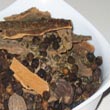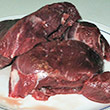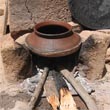Roots
جڑ والی سبزیاں
The root is that organ of a plant body (that typically lies below the surface of the soil or "aerial", growing above the ground or "aerating", growing up above the ground or especially above water) that bears no leaves, and therefore also lacks nodes. There are also important internal structural differences between stems and roots. The two major functions of roots are, absorption of water and inorganic nutrients, and anchoring the plant body to the ground. Roots also function in cytokinin synthesis, which supplies some of shoot needs. They often function in storage of food.
جڑ والی سبزی میں روغن اور حرارے (calories) کم ہوتے ہے اور غذائیت زیادہ ہوتی ہے۔ اور یہ سارا سال ملتی رہتی ہیں۔ان کی جگہ آپ گانٹھ والی سبزی استعمال کر سکتے ہیں۔
|
چقندر Beet, Beetroots |
|
It belongs to Chenopodiaceae family and genus Beta. It is native to the coasts of western and southern Europe, from southern Sweden and the British Isles south to the Mediterranean Sea. The fruit is a cluster of hard nutlets. Sugar beet grown for sugar. Beetroot or table beet or blood turnip used as a root vegetable. یہ خاندان Chenopodiaceae کی نوع Beta سے ہے۔ یہ گہرے سرخ ، سفید ، گہرے اودے سرخ اور پیلے ہوتے ہیں۔یہ گول ، لمبوترے اوربیلن نما ہوتے ہیں۔ان کی جگہ گاجر اور سلاد میں ٹماٹر استعمال کر سکتے ہیں۔3 سے 5 درمیانے چقندر آدھ کلو کے برابر ہوتے ہیں اور کٹے ہوۓ 2 کپ کے برابر۔ |
|
زرد مینا ، ریشہ بابا آدم Burdock |
|
t belongs to Asteraceae family and genus Arctium. Common Burdock (A. minus) grows wild throughout most of North America, Europe and Asia. The taproot of young burdock plants can be harvested and eaten as a root vegetable. While generally out of favor in modern European cuisine, it remains popular in Asia. یہ خاندان Asteraceae کی نوع Arctium سے ہے۔ یہ عام طور پر سوپ میں استعمال کی جاتی ہے۔ |
|
سانجنا، مونگا ، سینجنا، سینجن Horseradish (root) |
|
Horseradish belongs to Brassicaceae family and genus Armoracia. The plant is probably native to southeastern Europe and western Asia, but is popular around the world today. It grows up to 1.5 metres (five feet) tall and is mainly cultivated for its large white, tapering root, although the leaves are also edible. This is a very pungent brown root. Its root is used as a vegetable. یہ cabbage خاندان Brassicaceae کی نوع Armoracia سے ہے۔یہ بحیرہ روم یا مشرقی یورپ سے تعلق رکھتی ہے۔ کاٹنے پر تیز بو دیتی ہے جو دس پندرہ منٹ بعد ختم ہو جاتی ہے۔یہ ہمیشہ تازہ استعمال کی جاتی ہے۔ یہ چھیل کر کدوکش کی جاتی ہے اور عام طور پر گوشت کے مسالہ کے لۓ استعمال ہوتی ہے۔ |
|
سفید گاجر Parsnip |
|
It is a root vegetable related to the carrot. Parsnips resemble carrots, but are paler and have a stronger flavor. Like carrots, parsnips are native to Eurasia and have been eaten there since ancient times. Parsnips can be boiled, roasted or used in stews, soups and casseroles. When picking wild vegetables, it is easy to mistake poison hemlock (Conium maculatum) for parsnip, with deadly results. Good-quality parsnips will be firm, straight and have no deformities or blemishes. The coloring will be even and white to cream. It belongs to Apiaceae family and genus Pastinaca. یہ خاندان Apiaceae کی نوع Pastinaca سے ہے۔ یہ گاجر کی شکل جیسی ہے مگر کچی نہیں کھائی جاتی، یورپ میں یہ سوپ میں استعمال ہوتی ہے ۔اس کی جگہ گاجر استعمال کی جاسکتی ہے۔ |
|
سویڈی شلجم Rutabaga (roo-tuh-BAY-guh) |
|
The rutabaga or swede or yellow turnip is a root vegetable that originated as a cross between the cabbage and the turnip. Its leaves may also be eaten as a leaf vegetable. The vegetable is native to Sweden. The coloring will be a deep rust-red that fades to a cream. Serving size 1/2 cup (70g) : Calories 25 یہ خاندان Brassicaceae کی نوع Brassica سے ہے۔ یہ شلجم جیسا مگر جسامت میں اس سے کافی بڑا ہوتا ہے ۔یہ شلجم اور cabbage کا مخلط النسل ہے۔ اس پودے کے پتے بھی پکائے جاتا ہیں۔ |
|
شلجم Turnip |
 |
|
The turnip is a root vegetable grown for its white, bulbous taproot. Small, tender varieties are grown for human consumption, while larger varieties are grown as feed for livestock. It belongs to Brassicaceae family and genus Brassica. It is native to Afghanistan, Pakistan, and the Mediterranean. Serving size 3.5 oz. : Calories 23 یہ خاندان Brassicaceae کی نوع Brassica سے ہے۔ یہ سفید اور اُودے یا سفید اور پیلے رنگ میں ہوتے ہیں۔ یہ پکانے کے ساتھ کچے بھی استعمال ہوتے ہیں۔ |
|
شلجم نُما اجمود Celeriac (suh-LAIR-ee-yak) |
 |
|
Celeriac is grown as a root vegetable for its large and well-developed taproot rather than for its stem and leaves. Celeriac may be used raw or fresh. It is best to peel celeriac before use, since the outer skin is tough and stringy. It has the celery flavor, so it is often used as a flavoring in soups and stews; it can also be mashed or used in casseroles and baked dishes. It belongs to Apiaceae family and genus Apium. یہ خاندان Apiaceae کی نوع Apium سے ہے۔ فرانس میں اسے چھیل کر سوپ میں استعمال کیا جاتا ہے اس کے علاوہ اسے سلاد کے طور پر کچا بھی کھایا جاتا ہے- اس کی جگہ شلجم یا پارسلے کی جڑ استعمال کی جا سکتی ہے۔ |
|
شنک Salsify (SAL-suh-fee OR SAL-suh-fie) |
It belongs to Asteraceae family and genus Tragopogo. It is strong taproot and milky sap. There are two types: white salsify and the more highly regarded black salsify, scorzonera, black oyster plant, viper grass. یہ خاندان Asteraceae کی نوع Tragopogon سے ہے۔اس میں کستورے جیسی مہک ہوتی ہے ۔اس کی جگہ گاجر استعمال کر سکتے ہیں۔ |
|
گاجر Carrot |
 |
|
The carrot is a root vegetable, usually orange or white in color with a woody texture. The edible part of a carrot is a taproot. Carrots can be eaten raw, whole, chopped or grated into salads for color, and are also often chopped and cooked in soups and stews. The greens are edible as a leaf vegetable. It belongs to Apiaceae family and genus Daucus. Serving size 1 medium (78g) : Calories 40 یہ خاندان Apiaceae کی نوع Daucus سے ہے۔یہ عام طور پر سرخی مائل نارنجی ہوتی ہے مگر لکڑی جیسے انداز میں سفید بھی ہو سکتی ہے۔ ایک کپ کدوکش کی ہوئی گاجر برابر ہے ایک بڑی گاجر کے۔ اسے کچا بھی سلاد کے طور پر کھایا جاتا ہے۔ اس کے علاوہ اس سے میٹھی اشیاء بھی تیار ہوتی ہیں۔ |
|
گانٹھ گوبھی Kohlrabi (kohl-RAHB-ee or kohl-RAH-bee) |
|
The name comes from the German kohl (cabbage) plus rabi (turnip), because the swollen stem resembles the latter. Kohlrabi has been created by artificial selection for lateral meristem growth, its origin in nature is the wild mustard plant. The taste and texture of kohlrabi are similar to those of a broccoli stem or cabbage heart, but milder and sweeter, with a higher ratio of flesh to skin. The young stem in particular can be as crisp and juicy as an apple, although much less sweet. A kohlrabi resembles a turnip, only it's sweeter and more delicately flavored. It belongs to Brassicaceae family and genus Brassica. یہ خاندان Brassicaceae کی نوع Brassica سے ہے۔یہ سبز اور اودے رنگ میں ہوتی ہے اور دونوں ہی اندر سے سبزی مائل سفید ہیں۔یہ چھیل کرکچی بھی کھائی جاتی ہے۔ اس کی جگہ شلجم استعمال ہو سکتا ہے۔ |
|
مولی Radish |
 |
|
It belongs to Brassicaceae family and genus Raphanus. Most commonly known is the round, red-2skinned variety. Other varieties may have a pink, white or grey-black skin. A large, round yellow-skinned variety has a subtle taste of lemon. The most popular part for eating is the napiform taproot, although the entire plant is edible and the tops can be used as a leaf vegetable. The skin comes in a variety of colours. Most commonly known is the round, red-2skinned variety. Other varieties may have a pink, white or grey-black skin. A large, round yellow-skinned variety has a subtle taste of lemon. They come in many different shapes, colours, and sizes, such as black radishes, multi-coloured ones, round ones, and long ones that can grow longer than a parsnip. Spring Radish - Red: Comet; Cherry Belle (AAS); Ribella; Redball; Prinz Rotin. White: White Icicle; Burpee White. Bicolored or mixed colored: French Breakfast; D'Avignon; Easter Egg. There are several different kinds, which vary in color and shape. Some are oval, cylindrical, round, or tapered like an icicle. Each type has a wide range of colors; white, red, white and red, pink and white or a combination of white, rose and purple. Winter Radish - Old standby winter varieties with medium-size roots roughly equal to Turnips in weight include: Round Black Spanish; Long Black Spanish; Chinese White and China Rose. In recent years, interest in the much larger Oriental Radishes has caused the introduction of several Japanese varieties for soups, stews and pickling. These include: Summer Cross; April Cross; Tama; All Season; Minowase; Miyashige. White radish (Daikon, Winter radish) : The East Asian white radish is called "Chinese radish" or "daikon". The most common variety is carrot-shaped. The bulb of the radish is usually eaten raw, but tougher specimens can be steamed. The raw flesh has a crisp texture and a pungent, peppery flavour. Fresh leaves of daikon can also be eaten as a leaf vegetable. One of the most unlikely shaped daikon is Sakurajima daikon from Kagoshima Prefecture that is shaped like an oversized turnip with white outside and bright pink inside. Daikon is very low in food energy. A 3 ounce (85 g) serving contains only 18 calories. Serving size 7 Radishes (85g) یہ خاندان Brassicaceae کی نوع Raphanus سے ہے۔ یہ مولی گول، بیلن نما، بیضوی اور قلم یخ کی طرح قُطر میں آہستہ آہستہ کم ہو تی ہوئی۔ ہر شکل میں یہ سفید، سرخ، سفید اور سرخ، پیلی ، کالی ،گلابی اور سفید اور اودے رنگ میں ملتی ہے۔ یہ سلاد میں استعمال ہوتی ہے اسے خوبصورت انداز میں کاٹ کر بھی پیش کیا جاتا ہے۔یہ پورا پودا کھا سکتے ہیں۔ اس کی جگہ سفید مولی استعمال ہو سکتی ہے۔یہ کراری، چرپری، اشتہا انگیز ہے۔ |
|
مولی White radish |
 |
|
یہ عام طور پر سلاد میں استعمال ہوتی ہے، سلاد میں اس کی جگہ سرخ مولی استعمال کی جا سکتی ہے مگر یہ کم تیکھی ہو گی۔یہ کراری، چرپری، اشتہا انگیز ہے۔ |
|
Blackradish |
 |
|
We can peel and cook them like turnips. You can also serve them raw, though it helps to tame them down first by salting and rinsing them. یہ عام طور پر مشرقی یورپ میں استعمال ہوتی ہے۔اس کے چھلکے تقریباً کالے جب کے اندر سے سفید ہے۔ یہ کچی بھی استعمال ہوتی ہے۔ |
|
Lotus root |
 |
|
The flowers, seeds, young leaves and rhizomes are all edible. In Asia, the petals are sometimes used for garnish, while the large leaves are used as a wrap for food. Petals, leaves, and rhizome can also be eaten raw. The stamens can be dried and made into a fragrant herbal tea. The lotus seeds or nuts are quite versatile, and can be eaten raw or dried and popped like popcorn. Lotus roots (called bhe in some parts of India and Pakistan) are used as a vegetable. It belongs to Nelumbonaceae family and genus Nelumbo. اسے جب کاٹا جاۓ تو بہت اچھا نقش اس میں نظر آتا ہے۔اس پودے کا ہر حصہ کھایا جا سکتا ہے۔جڑ کے علاوہ باقی پودا کچا کھایا جاسکتا ہے۔اس کے حامل زر یعنی stamens کو خشک کر کے اس سے لوگ چاۓ بناتے ہیں۔ اس کے بیج کچے بھی کھا سکتے ہیں۔ انہیں ابال کر چینی ملا کر لُبدی یعنی paste بنائی جاتی ہے جو پیسٹری وغیرہ میں استعمال ہوتی ہے۔ |
|
Parsley root |
|
It belongs to Apiaceae family and genus Petroselinum. یہ خاندان Apiaceae کی نوع Petroselinum سے ہے۔ یہ یورپ میں عام استعمال ہوتی ہے-اس کی جگہ گاجر استعمال ہو سکتی ہے۔اس کی لوگ چاۓ پیتے ہیں۔ |






